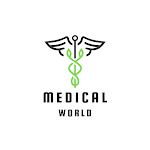Gastritis
Inflammation of the stomach can be acute or chronic condition.
Acute gastritis
This is usually a response to irritant drugs or alcohol. The drug most commonly implicated are non-steroidal anti-inflammatory drugs(NSAIDSs) including aspirin, even at low doses, although many others may also be involved. Other causes include the initial response to Helicobacter pylori infection and severe physiological stress, e.g. extensive burns and multiple organ failure.
There are varying degrees of severity. Mild cases can be asymptomatic or may present with nausea and vomiting associated with inflammatory changes of the gastric mucosa. Erosions, which are characterised by tissue loss affecting the superficial layer of the gastric mucosa may also occur. In more serious cases, multiple erosions may result in life-threatening haemorrhage causing haematemesis and melaena, especially in older adults.
The outcome depends on the extent of the damage. In many cases recovery is uneventful after the cause is removed. Where there has been extensive tissue damage, healing is by fibrosis causing reduced elasticity and peristalsis.
Chronic gastritis
Chronic gastritis is a milder but longer-lasting condition. It is usually associated with Helicobacter pylori but is sometimes due to autoimmune disease or chemical injury. It is more common in later life.
Helicobacter-associated gastritis
It is a bacterium that can survive in the gastric mucosa and is commonly associated with gastric conditions, especially chronic gastritis and peptic ulcer disease.
Autoimmune chronic gastritis
This is a progressive disease. Destructive inflammatory changes that begin on the surface of the mucosa membrane my extend to affect its whole thickness, including the gastric glands. When this stage is reached, secretion of hydrochloric acid and intrinsic factor are markedly reduced. The antigens are the gastric parietal cells are destroyed as a result of this autoimmune condition, the inflammatory subsides.
The causes of autoimmunity are not known but there is a familial predisposition and an associated with thyroid disorders.
Secondary consequences include:
- Pernicious anaemia due to lack of intrinsic factor
- Increased risk of cancer of the stomach
Peptic ulcer disease
Ulceration involves the full thickness of the gastrointestinal mucosa and penetrates the muscle layer. It is caused by disruption of the normal between the corrosive effect of gastric juice and the protective effect of mucus on the gastric epithelial cells. It may be viewed as an extension of the gastric erosions found in acute gastritis.
The most common sites for ulcers are the stomach and the first few centimetres of the duodenum. More rarely they occur in the oesophagus and round the anastomosis of the stomach and small intestine, following gastrectomy. The incidence of peptic ulcers is greater in men then women and increase with age.
The underlying causes are not known but there is a strong associated with H.pylori infections. It is believed that H.pylori, some drugs, e.g. non-steroidal anti-inflammatory drugs, and smoking may impair the gastric mucosal defences in some people. However, h.pylori is present in many people who show no signs of peptic ulcer disease.
Blood supply
Reduced blood flow and ischaemia may be caused by cigarette smoking and severe stress, either physical or mental. In stressful situations of the blood vessels supplying the alimentary tract
Secretion of mucus
The composition and the amount of mucus may be altered;
- By regular and prolonged use of aspirin and other anti-inflammatory drugs.
- By the reflux of bile acids and salts
- In chronic gastritis
Epithelial cell replacement
There is normally a rapid turnover of gastric and intestinal epithelial cells. This may be reduced;
- By raised level of steroid hormones, e.g. in response to stress or when they are used as drugs.
- In chronic gastritis
- By radiotherapy and cytotoxic drugs.
Acute peptic ulcers
These lesions may be single or multiple. They are found in many sites in the stomach and in the first centimetres of the duodenum. Their development is often associated with acute gastritis, severe stress, e.g. severe illness, shock, burns, severe emotional disturbance and following major surgery.
Chronic peptic ulcers
Theses ulcers are 2-3 times more common in the duodenum than the stomach. They usually occur singly in the pylorus of the stomach or in the duodenum. H.pylori is found in 90% of people with duodenal ulcers and in 70% of those with gastric ulcers. The remaining gastric ulcers are almost entirely due to NSAIDs. Smoking predisposes to peptic ulceration and delayed healing.
It consists of the following causes-
- Stricture of the lumen of the stomach
- Gastric outflow obstruction or stenosis of the pyloric sphincter
- Adhesions to adjecent structures, e.g. pancreas, liver, transverse colon.
Complications of peptic ulcers
It consists of the following terms-
Perforation
When an ulcers erodes through the full thickness of the wall of the stomach or duodenum their contents enter the peritoneal cavity, causing acute peritonitis
Anaemia
Chronic persistent low level bleeding from an ulcer may lead to development of iron deficiency anaemia.
Gastric outflow obstruction
It is also known as pyloric stenosis, fibrosis tissue formed as an ulcer in the pyloric region heals, causes narrowing of the pylorus that obstructs outflow from the stomach and results in persistent vomiting.
Malignancy
This is frequently associated with chronic gastritis caused by H.pylori.
Tumours of the stomach
It consists of the following terms-
Benign tumours
it is a rare condition.
Malignant tumours
This is a common malignancy that occurs more frequently in men than women and the incidence increase sharply after age of 50. The cause have not been established, but there appears to be a link with Helicobacter pylori infection in some 60-70% of cases. Smoking, alcohol and diets high in salted, smoked and pickled food have also been implicated. Local growth of the tumour gradually destroys the normal tissue so that achlorhydria and pernicious anaemia are frequently secondary features.



0 Comments